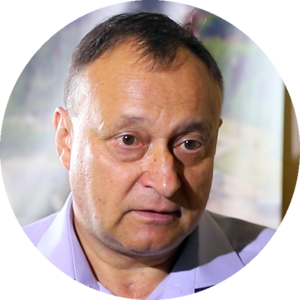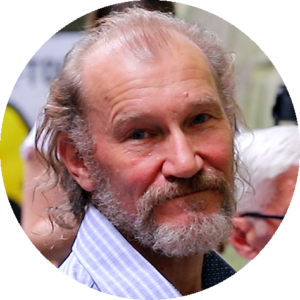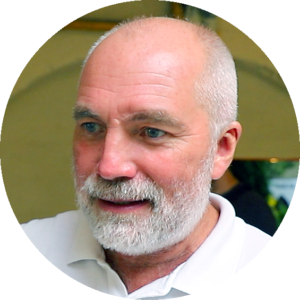“Chernobyl,” HBO’s hit five-part miniseries, has cast a spotlight not only on the worst nuclear power disaster in human history but also on the people who faced its aftermath.
Except for the lead female protagonist, Belarusian nuclear physicist Ulana Khomyuk, who is a fictional composite character, writer and producer Craig Mazin stuck to real people and their stories with a fanatical zeal for detail.
The Kyiv Post talked to four men who were involved in cleanup efforts after the explosion at Chornobyl’s Reactor Four on April 26, 1986. Not all of them were depicted in the series, but all had firsthand experiences with characters and events onscreen.
Read more: ‘Chernobyl’ series triggers interest in Ukraine’s history
Oleksiy Ananenko

Oleksiy Ananenko was one of three “divers” — Chornobyl nuclear plant workers who drained the water tanks beneath the reactor in order to prevent another explosion.
After the disaster, it was falsely reported that all three died as a result of their dangerous mission. In fact, they were hospitalized and survived. One of them, Valeriy Bespalov, now 61, lives in Kyiv and works at the State Inspection for Nuclear Regulation. Another, Borys Baranov, died in 2005, reportedly, from heart failure.
The third diver, Ananenko, will turn 60 this year. Throughout his career, he worked in state agencies dealing with nuclear energy. He is now retired. Two years ago, he was hit by a car while crossing the street and lay in a coma for several months. He never fully recovered from the accident. Today, Ananenko walks with a limp and shows signs of memory loss. His wife assists him, often answering questions for him.
The HBO series portrayed the three divers as brave volunteers who knew the mission could be fatal but were willing to sacrifice their lives to save thousands of others.
Ananenko insists that was not entirely correct. In April 1986, he was a 26-year-old senior mechanical engineer at the plant.
“It was an order from above. I was not a volunteer. We were told what we had to do, and we did it. I remember it well,” he said. “I didn’t have a feeling I was going to die. I did my job.”
As for his general impression from the “Chernobyl” series, he said: “I don’t think it is bad. But they [the American producers] understand it differently. At that time, I viewed what was happening differently.”
Serhiy Parashyn

Serhiy Parashyn, now 72, worked at the Chornobyl nuclear plant for 17 years. At the time of the accident, he was the secretary of the Communist Party committee at the plant. In other words, he had just as much authority as plant director Viktor Bryukhanov.
Although Parashyn is not featured in the HBO series, he was present at the real-life emergency meeting of the plant administration convened in the command bunker shortly after the explosion. He says it was different from the onscreen version.
“After the explosion, the phone operator called all the heads of various departments at the plant. They arrived, and each of them had a desk with a phone. They began calling their staff to gather information. For many hours, they were figuring out what happened,” he said.
Parashyn, who knew plant director Bryukhanov, chief engineer Nikolai Fomin, and deputy chief engineer Anatoly Dyatlov, says they were misrepresented in the series.
“Dyatlov had a rough temper, but he wasn’t a coward. Bryukhanov behaved more ethically. Fomin actually broke down. The operators were not passive,” he said. “For the first hours, the administration didn’t understand what was happening. The psychological shock was so strong that they couldn’t give commands in the first hours.
“I was there, and I didn’t believe that the reactor had exploded. I did not believe it until the morning when I saw the destroyed building with my own eyes.”
However, in general, the Soviet Union’s lies and concealment of information were presented correctly in the HBO series, albeit in a dramatized form, according to Parashyn.
“People were brought up in this system. When the phones were cut off at the plant shortly after the accident, I perceived it as a natural process,” he said. “Had it happened today, I would question why the communication was cut off. In this sense, the series shows the truth.”
Oleksiy Breus

On the early morning of April 26, 1986, control room operator Oleksiy Breus, then 27, came to start his shift at the Chornobyl nuclear plant, unaware that Reactor Four had exploded six hours ago.
Like many, he initially thought there had only been a fire. As a result, his task was to supply water to the reactor — until the plant administration realized and accepted that the reactor was gone.
Operators carried out an enormous burden of work that day.
Some had to extinguish fires along with the firefighters. Others had to find injured people and evacuate them out to a safe place where medics could take care of them. Others prevented new explosions and fires by removing hydrogen and oil from the generator.
Breus was among those who had to evaluate the condition of the reactor and gauge radiation levels in order to understand what to do next. “It required running around different sections of the plant, which was often dangerous as they were covered with rubble or filled with water.”
Breus praised the authenticity of the show’s details and its re-creation of everyday Soviet life. The series also demonstrates well the global scale of the Chornobyl disaster, he said.
But the characters were depicted incorrectly, he believes. His boss, Anatoly Dyatlov, deputy chief engineer at the plant, indeed had a rough temper, but in no way was he reckless, Breus said.
“He was not a madman. He based his actions on his knowledge as a nuclear scientist. After all, (his actions) weren’t the cause of the accident. It was alleged that his directions led to the accident. No, the blame was on the faulty design of the stop button in the reactor.”
After the accident, Breus had to sign a non-disclosure agreement.
“The list of topics that I was not allowed to talk about was three pages long. The first point was: ‘It is forbidden to talk about the real causes of the explosion.’ They likely meant the “red button” that, instead of instantly shutting down the reactor, caused the explosion,” he said.
After he received a high dose of radiation, doctors banned Breus from working at nuclear plants. Instead, he became a journalist. Five years ago, he quit and focused on art. Breus leads a group of artists called Strontium‑90 who dedicate their artwork to environmental issues and the Chornobyl nuclear disaster.
Serhiy Myrnyi

In 1986, Serhiy Myrnyi, a 27-year-old reserve officer with a chemical protection regiment, was drafted as a platoon commander for radiation surveillance in the Chornobyl exclusion zone. His service lasted 45 days and nights.
Myrnyi’s platoon was tasked with measuring radiation levels and reporting to the Ministry of Defense, which passed the data further on to the governmental commission for investigating the accident.
“We had to scout different areas around the plant, the red forest, sometimes remote villages. Based on the data we collected, the commission made decisions on whether to evict a village or what type of radiation protection measures to take. It was an important and interesting assignment,” he says.
Reflecting on the mistakes of the Soviet government, which the “Chernobyl” series explicitly depicts, Myrnyi says he can’t put all the blame on the state, even though he strongly disliked the communist system.
“As a military commander, I also didn’t fully understand the situation or was simply under stress and exhaustion. Mistakes were inevitable,” he said.
“Nobody could imagine that Chornobyl would happen. Three years before it, we were trained how to act during (the potential outbreak of) World War III. Nobody fully understood the scope (of the disaster) and its consequences. It was people’s first conscious encounter with radiation. We had to learn in the process.”
In general, he says, the Soviet Union did a great job in coping with an unprecedented radiation disaster.
After being discharged from the military, Myrnyi worked as a researcher on the mitigation and prevention of radiation accidents and authored books about the Chornobyl disaster. Ten years ago, he founded Chernobyl Tour, a leading tour company to the exclusion zone.
